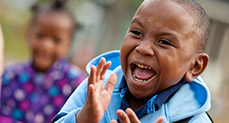Techniques for Safe Lifting and Carrying of Patients
Some PHS patients have little or no mobility and that means parents and caregivers may have to do some significant lifting, handling, and carrying. Physical demands for those caring for medically-fragile children can also include stooping, kneeling, crouching, pushing and pulling.
Here’s a reminder: be sure to use proper lifting techniques when helping a patient bathe, get in and out of bed, up and down stairs, or in any situation when lift equipment is unavailable or unnecessary.
Improper lifting can lead to serious back injuries to caregivers—and maybe patients, too—if they are dropped or slip in the process of being moved.
Back injury statistics
More than one million workers suffer back injuries each year, according to the Bureau of Labor Statistics. Back injuries account for one of every five workplace injuries or illnesses.
PHS recommends the following safe lifting techniques, published by The Brookhaven National Laboratory.
Basic steps of safe lifting and handling:
- Size up the load and check overall conditions. Don’t attempt the lift by yourself if the load appears to be too heavy or awkward. Check that there is enough space for movement, and that the footing is good. “Good housekeeping” ensures that you won’t trip or stumble over an obstacle.
- Make certain that your balance is good. Feet should be shoulder width apart, with one foot beside and the other foot behind the object that is to be lifted.
- Bend the knees; don’t stoop. Keep the back straight, but not vertical. (There is a difference. Tucking in the chin straightens the back.)
- Grip the load with the palms of your hands and your fingers. The palm grip is much more secure. Tuck in the chin again to make certain your back is straight before starting to lift.
- Use your body weight to start the load moving; then lift by pushing up with the legs. This makes full use of the strongest set of muscles.
- Keep the arms and elbows close to the body while lifting.
- Carry the load close to the body. Don’t twist your body while carrying the load. To change direction, shift your foot position and turn your whole body.
- Watch where you are going!
- To lower the object, bend the knees. Don’t stoop. To deposit the load on a bench or shelf, place it on the edge and push it into position. Make sure your hands and feet are clear when placing the load.
Watch this video on safe lifting techniques from The Occupational Health Clinics for Ontario Workers Inc. for further demonstration. The video is about 5:00 minutes in length.
Safe lifting and carrying dos and don’ts
Do:
- Tuck in the chin to keep the back as straight as possible while lifting.
- Lift with the strong leg muscles.
- Ask for help with the heavy, awkward items.
- When possible, use mechanical equipment to move heavy items.
Don’t :
- Use your back muscles to do lifting.
- Try to lift an item that is too heavy of awkward.
- Twist your body while carrying an object.
- Attempt team lifting without proper coordination.
Is mobility an issue for your pediatric patient? How do you manage the physical demands of caring for a medically-fragile child? Do you have any advice or tips to share? We’d love to hear from you.
Originally published: April 1, 2011

